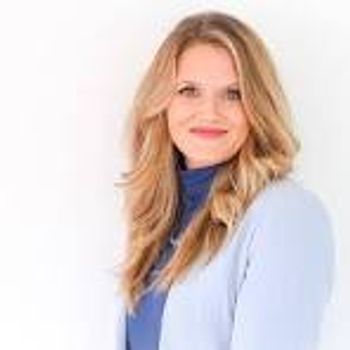
Tap into the popularity of HDHPs, HSAs
Consumer base more invested, engageable
The popularity of high-deductible health plans (HDHPs) and health savings account (HSA)-eligible insurance plans is continuing to grow, resulting in a savvier consumer base that is more invested in their healthcare and its costs.
“We are seeing more uptake when the choice is put in front of the employees. They will pick [these],” says Zahoor Elahi, senior vice president of payment solutions for Optum financial services. “We’re also seeing employers participate and seed HSA plans to incent employees to open that account.”
According to a census released by America’s Health Insurance Plans (AHIP), there were nearly 15.5 million people who were covered by HSA-eligible insurance plans in 2013, a figure that’s up from 13.5 million people in January of 2012. Additionally, AHIP found that the most significant enrollment gains between 2012 and 2013 were in the large group market, which increased from 7.9 million HSA/HDHP covered lives in 2012 to 9.6 million covered lives in 2013.
“Within the market, there is still less than 20% that are HSA eligible high-deductible plans and the market is growing by between 25% and 30%, and we are very much within that range as well,” Elahi says. “We see growth both in assets within HSAs as well as the actual accounts that get opened and funded growing at that rate.”
Employers take notice
The number of people enrolling in HDHPs and HSAs isn’t the only thing on the rise; the number of employers who are offering these type of plans is as well.
According to the results of a 2014 study conducted by Towers Watson and the National Business Group on Health, 82% of employers expect to offer a tax-advantaged account-based plan by 2015.
Industry experts have also observed an increase in the number of employers who are offering account-based health plans (ABHPs) as the only coverage option.
“In our survey, about 30% [of employers] in 2015 expect to have people exclusively in account-based plans, so full replacement is up quite a bit over 16% in 2014,” says Steve Wojcik, vice president of public policy at the National Business Group on Health. “It’s going [up] significantly from the prior year.”
Wojcik says as growth increases in HDHPs and HSAs, some employers are looking to reduce their offerings in other plan types.
“Generally, employers are focusing on the Cadillac tax coming up in 2018,” he says. “They’re trying to migrate people to the lower-cost plans and are then eliminating the high-cost plans as an option, so part of that usually involves introducing or expanding account-based plans.”
Some employers are leaving high-cost preferred provider organization plans and others are getting rid of HMO plans because they aren’t always as popular with employees, Wojcik says.
Consumer engagement
Consumers are often motivated to move toward HDHPs or HSAs because they’re attracted to the lower monthly premium and believe there may be an advantage to their overall bottom line, Elahi says. However, the level of involvement within HSAs often varies depending on the individual.
“We have gone out and looked at our client base and created stages of how consumers are using HSAs, and it goes from decide, to open, to use, to manage, to optimize,” he says. “When you get to the extreme right-which is the optimize stage-is where you have folks who are using it as a savings and investment tool.”
According to data from the Employee Benefit Research Institute and Greenwald & Associates Consumer Engagement in Health Care Survey, there was $23.8 billion in HSAs and health reimbursement arrangements (HRAs) in 2013, up from $18 billion in 2012. The combined average HRA and HSA account balance in 2013 was $2,010.
Healthcare experts say that overtime, consumers are growing their accounts to use for healthcare expenses or investment options.
Findings from the Employee Benefit Research Institute showed that those individuals who had either an HRA or HSA account for at least five years had an average of $3,491 in their account, compared to those who had the account for less than a year and typically only carried balances of less than $2,000 in their accounts.
In most cases, consumers are able, and do, rollover any excess money to the next year. In 2013, the average rollover amount was $1,165, according to the Employee Benefit Research Institute study.
Consumers who use HDHPs or HSAs aren’t just seeing potential financial advantages; experts say they also are becoming savvier consumers of healthcare.
“People begin to see the actual cost of things so they make more considered decisions about healthcare,” Wojcik says. “They may shop around more.”
Optum has observed these benefits in HSA account holders as well, Elahi says.
“We’ve also looked at the clinical journey of these consumers and over two, three, four years we see the awareness go up,” he says. “We see their understanding of why this account is actually a benefit for them-both short and long term-and we see their absorption of other health and wellness tools go up which help them better manage their wellness or activity.”
Increased transparency and education
While consumers are becoming savvier, flaws relating to transparency and education have been identified.
“As people try to shop, we’re seeing the limitations of the information and the data that are out there to help them,” Wojcik says. “That has spurred more government and others to push for [additional] tools and information [that allow] people to shop on price as well as know the quality associated with those prices.”
According to the survey report from Towers Watson and the National Business Group on Health, employers have taken steps over the years to try to make ABHPs more attractive to employees and have increased their communication efforts to better educate consumers. In fact, in 2014, 52% of employers surveyed had a year-round communication strategy and 30% included information on HSA education into their retirement information.
“Usually an employer has a strategy that has developed over several years where they’re increasingly introducing their employees to the ideas of consumerism and healthcare; that they can be a partner and make decisions on healthcare and there is quality information, there are quality differences, there are price differences, and then make them more aware of that,” Wojcik says.
Experts say that moving more employees into these types of plans can result in lower costs for the employer and often lead to an employee base that is more invested and engaged in their own health.These plans also are not much different for providers in terms of collecting payment for services.
“The difference is that the deductible might be higher than traditional plans,” Elahi says. “So the provider is enabled by the plan to understand what that deductible is and would know to collect-if that’s their policy-at the time of service. If their policy is to collect post-service, they can do that.”
However, Amy Fahrenkopf, MD, MPH, vice president of clinical strategy and design for Castlight Health, says she believes HDHPs-as well as exchange plans with lower actuarial values-have the potential to create bad debt for providers, who ultimately may not receive payment for services rendered. For example, if a patient receives care and is worried about paying the bill.
“From the health system side, they’ve provided a service and have no idea when they’re going to get paid for it,” she says.
Experts say that HDHPs and HSAs will only continue to grow.
Jill Sederstrom is a freelance writer based in Kansas City.
Newsletter
Get the latest industry news, event updates, and more from Managed healthcare Executive.
















































